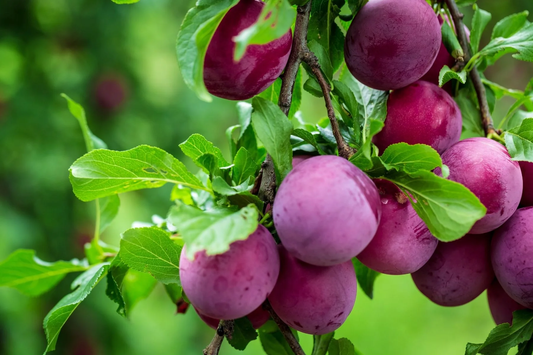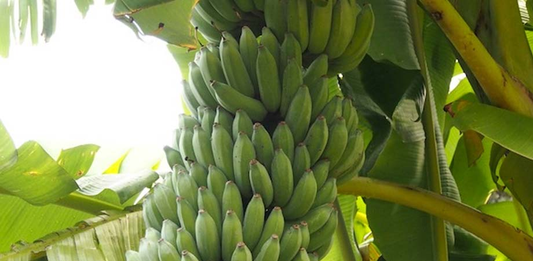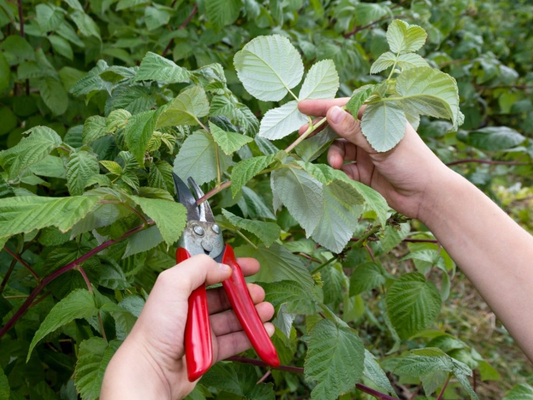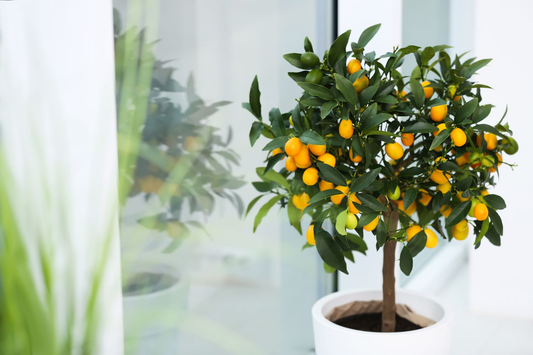Pest Control for Indoor Plants
Share
- 1. Introduction
- 2. Common Pests Affecting Indoor Plants
- 3. Identifying Pest Infestations Early
- 4. Natural and Organic Pest Control Methods
- 5. Chemical Treatments: When to Use Them
- 6. Preventing Pests from Entering Your Indoor Garden
- 7. Integrated Pest Management (IPM) for Indoor Plants
- 8. Dealing with Specific Pest Problems for Common Indoor Plants
- 9. How to Safely Handle Pest Control Products
- 10. When to Seek Professional Help
- 11. Frequently Asked Questions (FAQ)
1. Introduction
Indoor plants are a beautiful and beneficial addition to any space, enhancing air quality, adding color, and boosting mood. However, just like outdoor plants, they are susceptible to pests that can cause significant damage. Indoor pests can thrive in the warm, humid environments that many houseplants love, making it essential to monitor and manage pest populations to protect your plants.
Effective pest control is vital for the health and longevity of indoor plants. Pests such as aphids, spider mites, and mealybugs can quickly multiply and wreak havoc on plants, leading to problems like:
- Yellowing leaves
- Stunted growth
- Leaf drop
- Sticky residues from sap secretions
- Plant wilting or death
Not only do pests harm the plants, but they can also create an unpleasant environment in your indoor space, leaving a trail of mess and potentially even triggering allergies or respiratory issues. Addressing these issues promptly and effectively can save your plants from long-term damage.
In this blog, we aim to:
- Provide an overview of the most common indoor plant pests
- Guide you through identifying pest infestations early
- Explore natural and chemical pest control methods
- Offer preventative strategies to keep pests at bay
- Help you develop an Integrated Pest Management (IPM) approach

2. Common Pests Affecting Indoor Plants
Indoor plants, although protected from outdoor elements, are still vulnerable to a variety of pests that can damage their health and appearance. These pests can reproduce quickly, leading to widespread infestations if not controlled. Below are some of the most common pests that affect indoor plants:
- Aphids: Small, pear-shaped insects that suck sap from plant stems, leaves, and flowers. Symptoms include curled or distorted leaves, yellowing, and sticky residue on leaves.
- Spider Mites: Tiny arachnids that create fine webs on plant surfaces, particularly on the undersides of leaves. Symptoms include yellow or speckled leaves, and webbing around the plant.
- Mealybugs: White, cotton-like insects that cluster in leaf axils or on stems. Symptoms include sticky residue and deformed or yellowing leaves.
- Scale Insects: Hard or soft-shelled pests that attach themselves to the stems and leaves. Symptoms include yellowing of leaves, wilting, and a sticky coating on plant surfaces.
- Whiteflies: Small, white, flying insects that feed on the undersides of leaves. Symptoms include yellowing leaves, sticky residue, and visible pests when disturbed.
- Fungus Gnats: Small, dark flies that are commonly found around the soil of overwatered plants. Symptoms include yellowing leaves and damaged roots due to larvae feeding on them.
Here’s a table summarizing these pests and their symptoms:
| Pest | Symptoms |
|---|---|
| Aphids | Yellowing or curled leaves, sticky residue, distorted growth |
| Spider Mites | Speckled or yellowed leaves, fine webs, leaf drop |
| Mealybugs | Cotton-like clusters, sticky residue, deformed leaves |
| Scale Insects | Yellowing or wilting leaves, sticky coating, plant stunted growth |
| Whiteflies | Yellowing leaves, sticky residue, visible pests when disturbed |
| Fungus Gnats | Yellowing leaves, larvae feeding on roots, small flies around soil |
3. Identifying Pest Infestations Early
Early identification of pests is crucial to effectively controlling and preventing damage to your indoor plants. The sooner you detect a problem, the easier it is to treat and the less likely it is that the pests will spread to other plants or damage the plant irreparably. Catching infestations early can save you time, effort, and money in the long run.
Here are some common signs that indicate a pest problem:
- Visual Inspection: Check the entire plant regularly, including the undersides of leaves, stems, and soil surface. Pests like aphids, mealybugs, and spider mites often hide in these areas.
- Yellowing or Wilting Leaves: A common sign of many pests, especially aphids and spider mites, which feed on the plant’s sap, weakening it.
- Sticky Residue or Honeydew: Some pests, like aphids and scale insects, excrete honeydew, which can create a sticky mess on the leaves and attract mold.
- Visible Insects: If you see tiny insects or webs, especially on the undersides of leaves or along stems, it could be a sign of spider mites, whiteflies, or mealybugs.
- Fungus Gnats in the Soil: If you notice small flying insects around the base of your plant, it could indicate a fungus gnat infestation in the soil.
To help with early detection, you can use the following tools and methods:
- Magnifying Glass: A magnifying glass allows you to closely examine small pests like spider mites, aphids, and mealybugs, which are often too small to see with the naked eye.
- Sticky Traps: Yellow or blue sticky traps can be placed near your plants to capture flying pests such as whiteflies and fungus gnats. These traps will not only catch pests but also help you monitor the level of infestation.
- Soil Inspection: Gently lift the top layer of soil to check for larvae or adult fungus gnats, which are known to breed in damp, overwatered soil. Keeping the soil slightly dry can also deter these pests.

4. Natural and Organic Pest Control Methods
When it comes to pest control for indoor plants, many gardeners prefer to use natural and non-toxic methods to avoid harming their plants or the environment. These solutions are not only safe but also effective in managing pest populations without introducing harmful chemicals into your indoor space.
Below are some of the most popular natural and organic pest control methods:
Beneficial Insects for Indoor Plants
Introducing beneficial insects is one of the most eco-friendly ways to control pests naturally. These insects are predators of common pests and help to reduce their numbers without harming your plants.
- Ladybugs: These small beetles are known to eat aphids, mealybugs, and other soft-bodied pests. They can be purchased online or from garden stores and released onto your plants.
- Predatory Mites: These tiny mites feed on spider mites, thrips, and other small pests. They can be released into your plants’ soil or onto their leaves.
- Parasitic Wasps: Parasitic wasps are natural enemies of pests like aphids and whiteflies. They lay their eggs inside the pest, and the larvae eventually consume the pest from the inside out.
Natural Sprays and Solutions
Several natural sprays are effective in repelling or killing pests without harming your plants. Here are some popular options:
- Neem Oil: Derived from the neem tree, neem oil is a natural pesticide that works by disrupting the life cycle of pests, making it effective against aphids, spider mites, and whiteflies.
- Insecticidal Soap: This soap is a safe and effective way to control soft-bodied insects like aphids, mealybugs, and whiteflies. It works by suffocating the pests without harming the plant.
- Diatomaceous Earth: Made from fossilized algae, diatomaceous earth is a natural powder that can be sprinkled on plant surfaces or soil to control pests like ants, beetles, and slugs. It works by damaging the exoskeletons of insects, causing them to dehydrate and die.
Homemade Remedies
If you prefer DIY solutions, there are several homemade remedies you can try using common household ingredients:
- Garlic Spray: Garlic has natural insect-repellent properties. To make a garlic spray, blend a few cloves of garlic with water and strain the mixture before spraying it on your plants.
- Soap-Water Solution: Mix a tablespoon of mild dish soap with water and spray it directly onto the affected areas of your plant. This solution will help control aphids, spider mites, and mealybugs.
- Alcohol-Water Solution: A mixture of rubbing alcohol and water (1 part alcohol to 4 parts water) can be used to target pests like aphids, mealybugs, and whiteflies. The alcohol dehydrates the pests, killing them on contact.
Pros and Cons of Each Method
Each pest control method has its benefits and drawbacks. Below is a table summarizing the pros and cons of the most popular natural and organic pest control options:
| Method | Pros | Cons |
|---|---|---|
| Beneficial Insects (e.g., ladybugs, predatory mites) | Natural, eco-friendly, effective against a variety of pests, non-toxic | May not control pests quickly, can be costly, requires proper introduction to the plant environment |
| Neem Oil | Non-toxic, effective against many pests, prevents pest eggs from hatching | Can damage certain plants if overused, may leave a residue on plants |
| Insecticidal Soap | Safe for plants, effective against soft-bodied pests, easy to apply | Needs to be reapplied frequently, may not be effective against hard-bodied pests like scale insects |
| Diatomaceous Earth | Natural, safe for humans and pets, works on many types of insects | Can be messy, needs to be reapplied after watering, can irritate the lungs if inhaled |
| Garlic Spray | Easy to make at home, repels a variety of pests, natural and non-toxic | Strong odor that may not be pleasant, may not be effective on all pests |
| Soap-Water Solution | Cheap and easy to make, effective against many pests | Can harm some plants if not used properly, may require frequent reapplication |
| Alcohol-Water Solution | Effective on contact, easy to prepare, kills many pests | Can be harsh on plants if overused, may cause damage to sensitive leaves |
5. Chemical Treatments: When to Use Them
While natural and organic methods of pest control are often preferred for indoor plants, there are times when chemical treatments may be necessary. Chemical pesticides can be highly effective at controlling serious infestations that are not responding to non-toxic methods. However, these treatments come with potential risks and should be used with caution.
Role of Chemical Pesticides in Controlling Indoor Pests
Chemical pesticides can play an important role in pest control when infestations become severe and difficult to manage using natural methods. These pesticides are designed to kill or repel pests effectively and quickly. They are especially helpful in cases where pests have become resistant to natural control measures or when a large number of plants are affected.
- Fast Action: Chemical treatments can quickly eliminate pests, saving your plants from further damage.
- Broader Spectrum: They can target a wide range of pests, including those that might not be affected by natural remedies.
Types of Chemical Treatments
Chemical pesticides are available in various forms, each designed for different pest problems. The main types include:
- Systemic Insecticides: These are absorbed by the plant and spread throughout its tissues. When pests feed on the plant, they ingest the insecticide. This type of pesticide is effective for pests that are difficult to target directly, such as aphids and scale insects. Examples include imidacloprid and dinotefuran.
- Contact Insecticides: These are applied directly to pests and kill them on contact. These insecticides are effective against pests like ants, beetles, and spider mites. They are fast-acting but often require reapplication. Common contact insecticides include pyrethrins and permethrin.
- Insecticidal Dusts: These include products like diatomaceous earth that kill pests by damaging their exoskeletons, leading to dehydration. While not as toxic as liquid insecticides, they are still considered chemical treatments and should be used with care.
Risks and Considerations of Using Chemicals Indoors
While chemical pesticides can be effective, they come with several risks and considerations that make them less desirable for indoor use:
- Toxic Fumes: Many chemical pesticides release toxic fumes that can be harmful to both humans and pets when used indoors. It is crucial to ensure good ventilation and avoid exposure during and after application.
- Environmental Impact: Chemicals can affect the surrounding environment, harming beneficial insects like bees and pollinators, and potentially leaching into the soil or water.
- Plant Sensitivity: Some plants may react negatively to chemical treatments, causing leaf burn or stunted growth. Always test a small area of the plant before applying the pesticide to the entire plant.
When to Use Chemical Treatments vs. Natural Alternatives
While natural pest control methods should always be the first line of defense, there are certain situations where chemical treatments may be more appropriate:
- Severe Infestation: If a pest problem has gotten out of control and natural methods are not providing sufficient relief, chemical treatments may be necessary.
- Time Sensitivity: If pests are causing rapid damage to plants, chemical pesticides can act quickly to mitigate further harm.
- Resistance to Natural Remedies: Some pests may have developed resistance to natural pest control methods. In such cases, chemical treatments may be the only viable solution.

6. Preventing Pests from Entering Your Indoor Garden
Preventing pests from entering your indoor garden is crucial to maintaining healthy plants and a pest-free environment. Early action and regular care can help reduce the chances of pest infestations. By following these preventive steps, you can keep your indoor garden thriving and safe from unwanted pests.
Preventative Steps Before Bringing New Plants Indoors
Before introducing new plants to your indoor garden, it's important to inspect them thoroughly to avoid bringing pests inside. Here are key steps to follow:
- Quarantine New Plants: Isolate new plants for at least 1-2 weeks in a separate room to monitor for any signs of pests. This prevents potential infestations from spreading to your other plants.
- Inspect Plants: Carefully check the plant’s leaves, stems, and soil for visible pests, such as aphids, mealybugs, or spider mites. Look for any unusual spots or damage on the plant that could indicate an infestation.
- Soil Check: Check the soil for signs of pests like larvae or fungus gnats. If you notice any pests, consider repotting the plant into fresh soil before bringing it indoors.
Regular Plant Care and Cleaning
Maintaining a regular cleaning routine for your indoor plants is essential for preventing pest problems. Regular care can help remove pests before they multiply:
- Wiping Leaves: Regularly wipe the leaves of your plants with a damp cloth to remove dust, dirt, and any potential pests. This also helps to improve photosynthesis and the overall health of your plants.
- Pruning Dead Leaves: Trim dead or yellowing leaves regularly to avoid attracting pests. Dead plant material can harbor pests and create a breeding ground for fungi and other pests.
- Cleaning the Soil Surface: Remove any debris or fallen leaves from the surface of the soil. These can serve as hiding spots for pests like fungus gnats and ants.
Ensuring Proper Humidity and Ventilation
Pests are more likely to thrive in environments that are overly humid or have poor airflow. Maintaining proper humidity and ventilation is key to preventing pest infestations:
- Humidity Control: Keep the humidity levels balanced by using a humidifier or placing your plants in a well-ventilated area. Avoid excessively high humidity, as it can attract pests like spider mites and mold.
- Good Airflow: Ensure that your indoor garden is in a well-ventilated area. Adequate airflow helps prevent the buildup of moisture, reducing the chances of pests like fungus gnats and mildew.
Best Practices for Keeping Your Indoor Garden Pest-Free
Follow these best practices to keep your indoor garden pest-free:
- Regular Inspections: Frequently check your plants for signs of pests. Early detection allows you to take quick action before the infestation becomes serious.
- Clean the Area: Regularly clean the area around your plants, including the shelves or windowsills they sit on. Dust and dirt can harbor pests that may spread to your plants.
- Use Preventative Natural Treatments: Consider using natural pest repellents, such as neem oil or insecticidal soap, as a preventive measure. Regular application of these solutions can deter pests from settling on your plants.

7. Integrated Pest Management (IPM) for Indoor Plants
Integrated Pest Management (IPM) is a comprehensive and sustainable approach to managing pests that combines various control methods to prevent and treat pest problems. For indoor plants, IPM can be a highly effective way to minimize pest damage while maintaining a healthy and safe environment. This section will provide an overview of IPM, explain its key components, and show you how to develop an IPM plan for your indoor garden.
Overview of Integrated Pest Management
Integrated Pest Management (IPM) is a strategy that focuses on long-term prevention and management of pests through a combination of techniques. The goal of IPM is to keep pest populations at manageable levels while minimizing the use of harmful pesticides. This approach is especially relevant for indoor plants, where pests can quickly spread and cause significant damage in a confined space. IPM involves monitoring, prevention, and control methods that work together to manage pests effectively.
Key Components of IPM
There are five key components of IPM that work together to control pest problems in indoor plants:
- Prevention: The first line of defense against pests is prevention. This includes practices like quarantining new plants, inspecting plants before bringing them indoors, and ensuring that the indoor environment is conducive to plant health without attracting pests.
- Monitoring: Regular monitoring and inspections help detect pest problems early. By frequently checking plants for signs of infestations, you can address issues before they become widespread.
- Mechanical Control: This involves using physical methods to control pests, such as removing insects manually, using sticky traps, or pruning affected plant parts to eliminate pest habitats.
- Biological Control: Beneficial insects or natural predators, such as ladybugs or predatory mites, can be introduced to control pest populations. This helps reduce the need for chemical treatments and supports a more balanced ecosystem.
- Chemical Control: As a last resort, IPM incorporates the use of chemical treatments. However, the goal is to use the least toxic and most targeted treatments possible to avoid harming beneficial insects and the environment. Natural pesticides, like neem oil or insecticidal soap, are often preferred in IPM strategies.
Benefits of Using IPM
IPM offers several advantages for managing indoor plant pests:
- Sustainable Approach: IPM focuses on long-term pest control solutions, reducing the reliance on chemical pesticides and minimizing environmental impact.
- Reduced Pesticide Use: By combining prevention, monitoring, and natural control methods, IPM helps reduce the need for harmful pesticides, making it a safer and healthier option for indoor plants.
- Cost-Effective: IPM can be cost-effective in the long run, as it helps prevent large-scale pest infestations that can lead to expensive plant replacements and chemical treatments.
- Healthier Plants: By maintaining a balanced approach to pest control, IPM ensures that plants remain healthy, thriving without the overuse of chemicals that can damage plant tissues or soil health.
How to Develop an IPM Plan for Indoor Plants
To create an effective IPM plan for your indoor plants, follow these steps:
- Step 1 - Identify Your Plants: Know the types of plants in your indoor garden and their specific care requirements. Different plants may attract different pests or require different control measures.
- Step 2 - Regular Monitoring: Schedule regular plant inspections to check for any signs of pests. Use a magnifying glass to look closely at leaves, stems, and soil.
- Step 3 - Prevention Methods: Implement preventive measures, such as quarantining new plants, cleaning pots and soil, and maintaining proper humidity levels to discourage pests.
- Step 4 - Choose Control Methods: Based on your observations, choose appropriate pest control methods. For example, use mechanical control for small infestations, or introduce beneficial insects for more widespread problems.
- Step 5 - Regular Maintenance: Continue monitoring and maintaining your plants, adjusting your pest management plan as needed to ensure pest-free indoor gardening.
Example of an IPM Strategy for a Common Indoor Plant Pest Problem
Let’s say you have a mealybug infestation on your indoor plants. Here’s how you could apply IPM to manage this problem:
- Prevention: Quarantine new plants and check for mealybugs before bringing them indoors.
- Monitoring: Inspect your plants regularly for white, cotton-like clusters of mealybugs on the stems and leaves.
- Mechanical Control: Manually remove mealybugs using a cotton swab dipped in rubbing alcohol.
- Biological Control: Introduce ladybugs or parasitic wasps to control the mealybug population naturally.
- Chemical Control: If the infestation is severe, use a natural insecticide like neem oil to target the mealybugs while being gentle on your plants and the environment.
8. Dealing with Specific Pest Problems for Common Indoor Plants
Different indoor plants can attract specific pests that require tailored solutions. In this section, we'll troubleshoot common pest problems for popular indoor plants like the snake plant, pothos, peace lily, and spider plant. Each case study will include solutions for effectively managing the pests that tend to affect these plants the most.
Case Studies for Specific Plants
Here are some common pest problems for popular indoor plants, along with solutions to address them:
1. Snake Plant
Common Pest: Mealybugs
- Symptoms: Mealybugs are white, cotton-like pests that usually appear on the leaf joints and base of the plant. Infested leaves may turn yellow and wilt.
- Solution: Remove mealybugs manually by wiping them off with a cotton swab dipped in rubbing alcohol. If the infestation is severe, use insecticidal soap or neem oil to treat the plant.
2. Pothos
Common Pest: Spider Mites
- Symptoms: Spider mites cause small, speckled yellow or brown spots on leaves. You might also see fine webbing on the undersides of leaves.
- Solution: Increase humidity around the plant to make the environment less favorable for spider mites. Rinse the leaves with water to remove mites, or use insecticidal soap or neem oil for more persistent infestations.
3. Peace Lily
Common Pest: Aphids
- Symptoms: Aphids cause distorted or curled leaves, along with a sticky residue left on the surface of leaves due to their feeding.
- Solution: Spray the plant with a mixture of water and a few drops of dish soap to suffocate aphids. You can also introduce natural predators like ladybugs or use neem oil for a more thorough solution.
4. Spider Plant
Common Pest: Whiteflies
- Symptoms: Whiteflies cause yellowing of leaves, and when disturbed, they release small white flying insects. They also leave a sticky residue on leaves.
- Solution: Remove whiteflies using sticky traps. For larger infestations, treat the plant with insecticidal soap or neem oil to eradicate the pests.
Common Pests by Plant Species
To make it easier to identify and treat pest problems based on the specific plant, here’s a table summarizing the common pests that affect popular indoor plants:
| Plant Species | Common Pests | Symptoms | Suggested Treatment |
|---|---|---|---|
| Snake Plant | Mealybugs | White, cotton-like pests; yellowing leaves | Rubbing alcohol, neem oil, insecticidal soap |
| Pothos | Spider Mites | Yellow or brown speckled leaves; fine webbing | Increase humidity, rinse leaves, insecticidal soap, neem oil |
| Peace Lily | Aphids | Distorted leaves, sticky residue | Water + dish soap, natural predators, neem oil |
| Spider Plant | Whiteflies | Yellowing leaves, small white flying insects | Sticky traps, insecticidal soap, neem oil |
By understanding the common pests that affect your specific indoor plants, you can take more targeted and effective steps to manage infestations. Regular monitoring and early intervention are key to keeping your plants healthy and pest-free.

9. How to Safely Handle Pest Control Products
When using pest control products, whether natural or chemical, it’s essential to follow safety guidelines to protect both your health and the environment. Safe handling, storage, and disposal are key components of responsible pest management, ensuring that treatments are effective while minimizing any potential harm.
Safe Handling of Pest Control Products
- Read labels carefully: Always follow the instructions on the label for both natural and chemical pest control products. This includes correct application methods, dosage, and safety precautions.
- Use protective gear: When applying chemical treatments, wear gloves, long sleeves, and eye protection to prevent contact with your skin and eyes. Natural remedies like neem oil may still cause irritation, so take similar precautions.
- Apply in a well-ventilated area: Ensure the room is well-ventilated by opening windows or using a fan to disperse fumes from chemicals. Proper ventilation helps prevent inhaling any harmful vapors.
Storing Pest Control Products Safely
- Keep away from children and pets: Store pest control products in a secure, locked area away from children and pets. Even natural products can be harmful if ingested or inhaled.
- Store in a cool, dry place: Avoid storing products in direct sunlight or near heat sources, as this can degrade the effectiveness of the treatments and may cause leakage or spills.
Disposal of Pest Control Products
- Eco-friendly disposal: Look for eco-friendly disposal instructions on the product label. Many chemical treatments should not be poured down the drain or thrown in regular trash. Check with local authorities for safe disposal options.
- Dispose of empty containers: Ensure containers are thoroughly rinsed before disposal. Recycle packaging when possible or dispose of it according to local recycling guidelines.
10. When to Seek Professional Help
While DIY pest control methods can be effective for minor infestations, there are times when professional intervention is necessary. Recognizing when your pest problem has gone beyond your control is crucial to ensuring your plants' health and the safety of your indoor environment.
When DIY Methods Are Insufficient
- Persistent or worsening infestations: If despite repeated treatments, pests continue to thrive or reappear, it may be time to consult a professional.
- Large-scale infestations: A widespread pest problem across many plants, especially in larger indoor gardens, is often difficult to manage without professional help.
Signs That a Pest Problem Has Escalated
- Severe damage to plants: When pests cause significant damage, such as defoliation or stunted growth, and the health of your plants is compromised, it may be beyond DIY treatment.
- Worsening symptoms: If your plants show signs of severe stress—such as wilting, yellowing leaves, or sticky residue—it indicates that the infestation has escalated and requires professional attention.
How to Choose a Pest Control Service
- Look for experience: Choose a service with experience in dealing with indoor plant pests. Check reviews and certifications to ensure their expertise.
- Consider eco-friendly practices: If you're concerned about chemical exposure, select a pest control company that offers eco-friendly and non-toxic methods for pest management.
- Get quotes and compare: Request quotes from multiple companies and compare their services, methods, and prices. This helps you make an informed decision that fits your budget and needs.
11. Frequently Asked Questions (FAQ)
1. How can I tell if my plant has pests or is just sick?
It can be difficult to distinguish between pest damage and plant illness. Key signs of pests include visible insects, sticky residue, webbing (in the case of spider mites), and discolored or deformed leaves. Sick plants may show signs like yellowing leaves, wilting, or browning edges, but without visible pests or damage. Performing a close visual inspection, checking for tiny insects or larvae, can help confirm if pests are the issue.
2. Are there any indoor plants that are more resistant to pests?
Yes, some indoor plants are naturally more resistant to pests due to their hardy nature or strong fragrances that deter insects. Plants such as spider plants, snake plants, and ZZ plants tend to be more pest-resistant. However, all plants can fall victim to pests if conditions are favorable.
3. Can I use pest control on my plants while they are blooming?
It depends on the pest control method. Many natural pest control solutions, like neem oil, are safe to use on blooming plants. However, chemical treatments should be used cautiously during blooming to avoid harming flowers or affecting pollination. Always check the label of the pest control product for specific instructions.
4. How do I treat a severe mealybug infestation?
A severe mealybug infestation requires thorough treatment. Start by isolating the infected plant to prevent spreading. Use a cotton swab dipped in rubbing alcohol to wipe off visible mealybugs. Follow up with an insecticidal soap or neem oil spray to target the remaining pests. In some cases, repeated treatments may be necessary.
5. Is it possible to prevent fungus gnats indoors completely?
While it’s challenging to prevent fungus gnats entirely, you can minimize their presence by ensuring proper drainage, avoiding overwatering, and removing any decaying organic matter from the soil surface. Using sticky traps can also help monitor their numbers and prevent an infestation.
6. How often should I inspect my plants for pests?
It’s a good practice to inspect your indoor plants at least once a week. Look closely at the undersides of leaves, stems, and soil for early signs of pests. Regular inspections allow you to catch infestations early, preventing them from spreading and causing significant damage.




